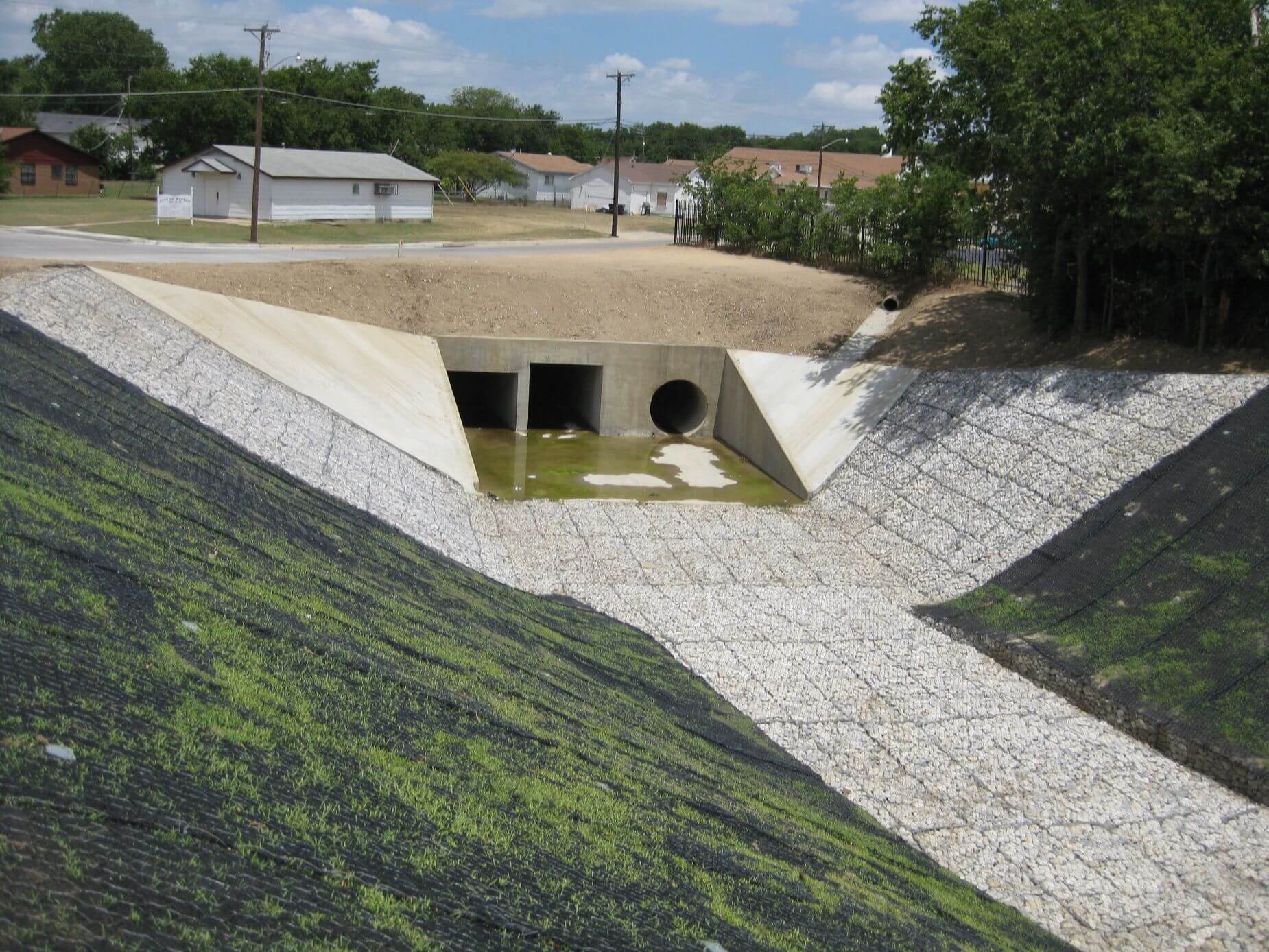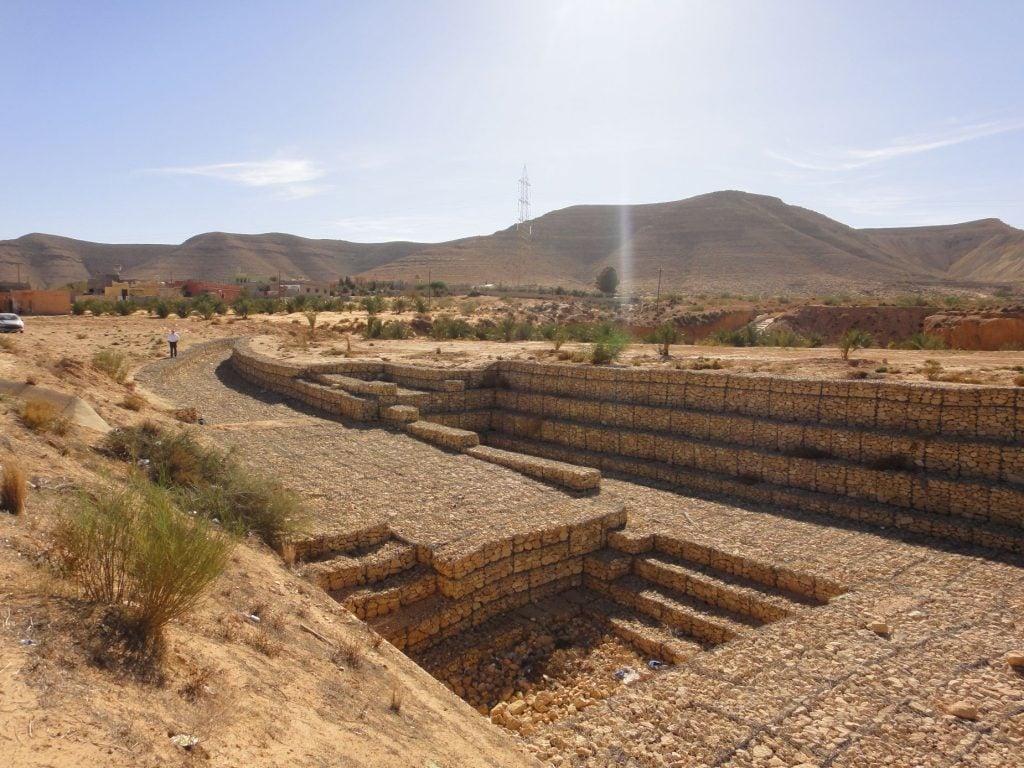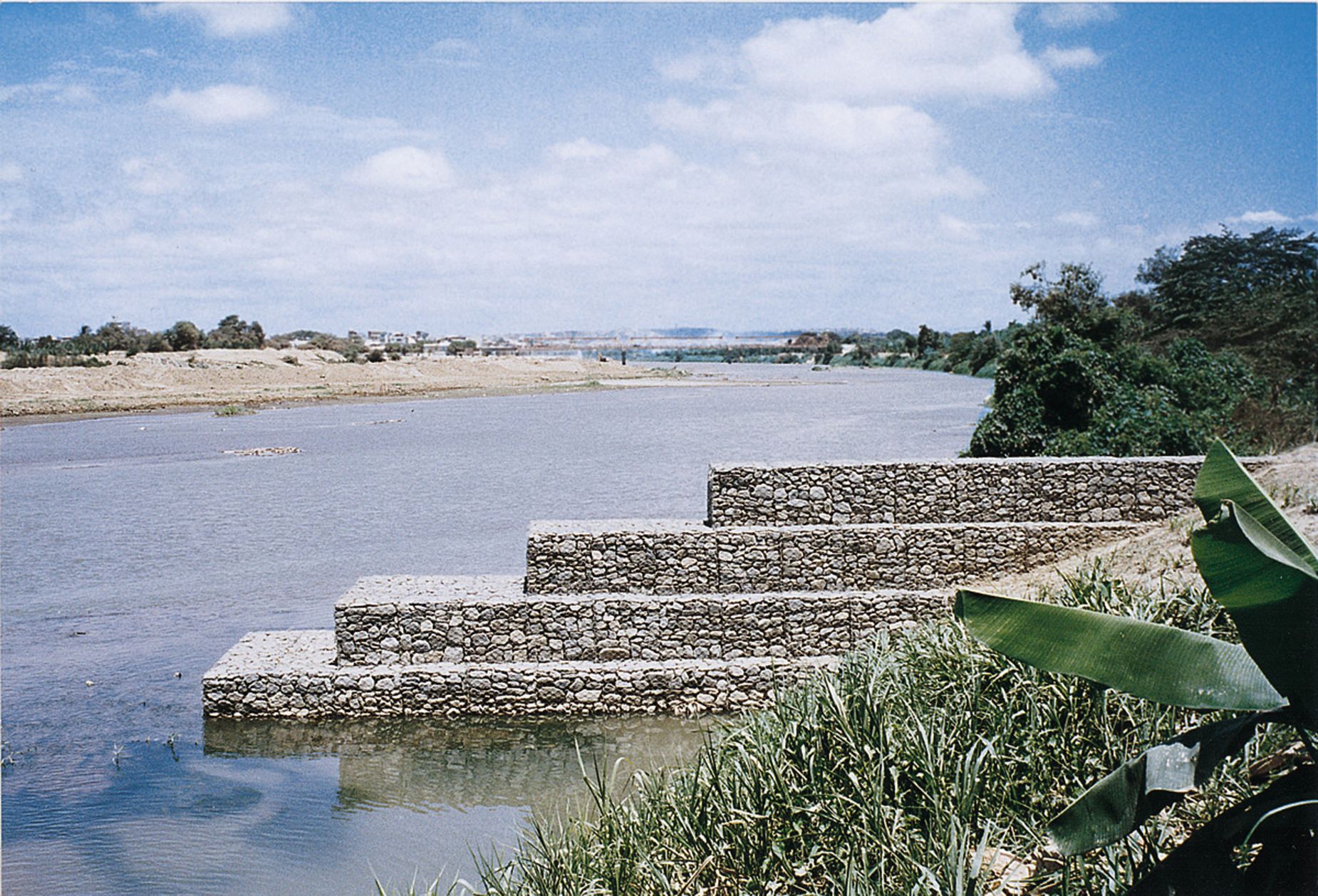Weirs, Culverts and Transverse Structures

Transverse Structures are used to control dynamic hydraulic flows carrying solids or sediments. These structures obstruct the flow, changing its hydraulic behavior and its ability to erode. We have over a century of experience in the selection of appropriate transverse structures used to control water channel flow.
Our engineers work with our clients and use MacRA Studio design software in order to design channels, longitudinal and transverse structures. These enable the designer to rapidly perform preliminary hydraulic studies to evaluate the bank protection or the transverse weir required. An open library of products enables a combination of man-made and natural solutions to be considered.
Different types of weirs
Weirs, according to the shape of the downstream face at the center of flow, are classified into three types, : vertical weirs, stepped weirs and sloped weirs.
The prime objective is to determine a hydraulic profile where bed-load transportation and siltation are in equilibrium. Introducing weirs reduces the bed slope and therefore transportation. PoliMac coated Gabion weirs are robust, flexible and easy to install, and are used as both primary and counter-weirs on larger installations. Reno Mattresses Plus are used to line stilling or energy dissipation basins, when required.

River Groynes and Breakwaters
Rivers are an infrastructure resource in many countries, and therefore they must be navigable. To maintain the river water depth at a constant navigable level longitudinal groynes can be installed. The groynes divert the water flow towards the channel center and exploit the water scouring action to keep the navigation channel open. Gabion longitudinal groynes are typically installed by using cylindrical gabions or sack gabions. Transverse groynes are structures which protrude into the river channel or estuary, to disrupt the flow and todivert it away from the side of the river on which the groynes are built. Gabion groynes represent a tried-and-tested solution to major erosion phenomena along water courses characterized by high transportation load. Gabion groynes create areas of “hydraulic calm” where transportation of the bed-load changes to deposition, reinstating eroded areas of the riverbed and banks. Larger rivers can even feature river breakwaters, which are used to manage the forces of the river water upon the riverbanks. Similar technology and approaches, as those used in our coastal breakwaters, are used in river breakwaters . These include not only the selection of the deflection/breakwater structure itself, but also the foundation mattress for the structure, which is instrumental in preventing scour beneath the intervention.
Bridge Piers – Solutions for erosion protection
Transverse structures can also relate to bridges, whose piers often disrupt hydraulic conditions within a water course. The creation of eddies around piers can increase scour erosion around the bridge. Selecting from our range of erosion protection systems, we can advise clients on suitable long-term protection solutions. Additionally, we can provide support on the best mechanism for installation that minimizes disruption to river traffic or the environment.
Culverts and River Crossings – Controlling focused erosion challenges
Transverse obstructions across a water course can cause focused erosion problems due to the changes in the hydraulic conditions. A new road over a river can often include a culvert, which constrains the natural flow of the river into a man-made pipe or box structure. These changing hydraulic profiles focus erosion forces on the riverbed and must be controlled.
Dams
These are a specific type of transverse structure and are designed to impound water. The management of the impounded water and the condition of the dam are important. Drawing on our hydraulic engineering knowledge, we have provided clients with channelling and erosion protection work, designed to control water around the dam. Where dams are exposed to erosion whether on spillways, the crest or face of the dam, we can help. We can help clients overcome these risks, determining if the solution requires straightforward erosion protection or more detailed hydraulic work.

 Sectors
Sectors Applications
Applications Solutions
Solutions